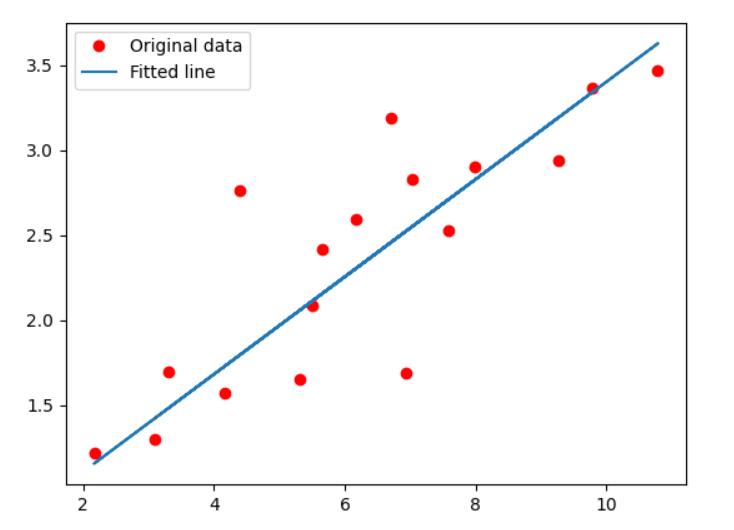TensorFlow1.x 代码实战系列:MNIST手写数字识别
Posted 白马金羁侠少年
tags:
篇首语:本文由小常识网(cha138.com)小编为大家整理,主要介绍了TensorFlow1.x 代码实战系列:MNIST手写数字识别相关的知识,希望对你有一定的参考价值。
相关资料
实战1:MNSIT手写数字识别
这里使用的是普通的DNN模型实现MNIST识别,如果想提高精度,可以自行使用CNN模型。
'''
A logistic regression learning algorithm example using TensorFlow library.
This example is using the MNIST database of handwritten digits
(http://yann.lecun.com/exdb/mnist/)
Author: Aymeric Damien
Project: https://github.com/aymericdamien/TensorFlow-Examples/
'''
import tensorflow._api.v2.compat.v1 as tf
tf.disable_v2_behavior()
# Import MNIST data (https://aitechtogether.com/ai-question/19979.html)
from tensorflow.examples.tutorials.mnist import input_data
# https://github.com/tensorflow/tensorflow/tree/0a3f4e15331b3fbd0ccb60d2b00c1f384f6a32ec/tensorflow/examples/tutorials
mnist = input_data.read_data_sets("/tmp/data/", one_hot=True)
# Parameters
learning_rate = 0.01
training_epochs = 50
batch_size = 100
display_step = 5
# tf Graph Input
x = tf.placeholder(tf.float32, [None, 784]) # mnist data image of shape 28*28=784
y = tf.placeholder(tf.float32, [None, 10]) # 0-9 digits recognition => 10 classes
# [None, 784] 不知道batch_size大小,但是知道最后一个维度必须是784
# Set model weights
W = tf.Variable(tf.zeros([784, 10]))
b = tf.Variable(tf.zeros([10]))
# Construct model
pred = tf.nn.softmax(tf.matmul(x, W) + b) # Softmax
# pred: [batch_size, 100]
# Minimize error using cross entropy (一个batch样本的交叉熵损失)
# softmax loss: https://zhuanlan.zhihu.com/p/83772845
cost = tf.reduce_mean(-tf.reduce_sum(y * tf.log(pred), reduction_indices=1))
# Gradient Descent
optimizer = tf.train.GradientDescentOptimizer(learning_rate).minimize(cost)
# Initialize the variables (i.e. assign their default value)
init = tf.global_variables_initializer()
# Start training
with tf.Session() as sess:
# Run the initializer
sess.run(init)
# Training cycle
for epoch in range(training_epochs):
avg_cost = 0.
total_batch = int(mnist.train.num_examples / batch_size)
# Loop over all batches
for i in range(total_batch):
batch_xs, batch_ys = mnist.train.next_batch(batch_size)
# batch_xs: [batch_size, 784]
# batch_ys: [batch_size, 10]
# out = sess.run(pred, feed_dict=x:batch_xs, y:batch_ys)
# print(out.shape)
# Run optimization op (backprop) and cost op (to get loss value)
_, c = sess.run([optimizer, cost], feed_dict=x: batch_xs,
y: batch_ys)
# cost: 一个batch样本的交叉熵损失
# Compute average loss
avg_cost += c / total_batch
# Display logs per epoch step
if (epoch + 1) % display_step == 0:
print("Epoch:", '%04d' % (epoch + 1), "cost=", ":.9f".format(avg_cost))
print("Optimization Finished!")
# Test model
correct_prediction = tf.equal(tf.argmax(pred, 1), tf.argmax(y, 1))
# Calculate accuracy
accuracy = tf.reduce_mean(tf.cast(correct_prediction, tf.float32))
# test.images: (10000, 784), test.labels: (10000, 10)
# tf.eval()是sess.run()的另一个写法
# debug时可以令input = x: mnist.test.images, y: mnist.test.labels
print("Accuracy:", accuracy.eval(x: mnist.test.images, y: mnist.test.labels))
Epoch: 0005 cost= 0.465507917
Epoch: 0010 cost= 0.392346543
Epoch: 0015 cost= 0.362667364
Epoch: 0020 cost= 0.345452763
Epoch: 0025 cost= 0.333730606
Epoch: 0030 cost= 0.325053533
Epoch: 0035 cost= 0.318299953
Epoch: 0040 cost= 0.312863539
Epoch: 0045 cost= 0.308358982
Epoch: 0050 cost= 0.304474182
Optimization Finished!
Accuracy: 0.9193
Process finished with exit code 0
实战2:线性回归
'''
A linear regression learning algorithm example using TensorFlow library.
Author: Aymeric Damien
Project: https://github.com/aymericdamien/TensorFlow-Examples/
'''
import tensorflow._api.v2.compat.v1 as tf
tf.disable_v2_behavior()
import numpy
import matplotlib.pyplot as plt
rng = numpy.random
# Parameters
learning_rate = 0.01
training_epochs = 1000
display_step = 50
# Training Data
train_X = numpy.asarray([3.3, 4.4, 5.5, 6.71, 6.93, 4.168, 9.779, 6.182, 7.59, 2.167,
7.042, 10.791, 5.313, 7.997, 5.654, 9.27, 3.1])
train_Y = numpy.asarray([1.7, 2.76, 2.09, 3.19, 1.694, 1.573, 3.366, 2.596, 2.53, 1.221,
2.827, 3.465, 1.65, 2.904, 2.42, 2.94, 1.3])
n_samples = train_X.shape[0]
# tf Graph Input
X = tf.placeholder(tf.float32) # If the shape is not specified, you can feed a tensor of any shape.
Y = tf.placeholder("float")
# Set model weights
W = tf.Variable(rng.randn(), name="weight")
b = tf.Variable(rng.randn(), name="bias")
# Construct a linear model
pred = tf.add(tf.multiply(X, W), b)
# Mean squared error
cost = tf.reduce_sum(tf.pow(pred - Y, 2)) / (2 * n_samples)
# Gradient descent
# Note, minimize() knows to modify W and b because Variable objects are trainable=True by default
optimizer = tf.train.GradientDescentOptimizer(learning_rate).minimize(cost)
# Initialize the variables (i.e. assign their default value)
init = tf.global_variables_initializer()
# Start training
with tf.Session() as sess:
# Run the initializer
sess.run(init)
# Fit all training data
for epoch in range(training_epochs):
for (x, y) in zip(train_X, train_Y):
sess.run(optimizer, feed_dict=X: x, Y: y)
# Display logs per epoch step
if (epoch + 1) % display_step == 0:
# 所有训练集的MSE loss
c = sess.run(cost, feed_dict=X: train_X, Y: train_Y)
print("Epoch:", '%04d' % (epoch + 1), "cost=", ":.9f".format(c), \\
"W=", sess.run(W), "b=", sess.run(b))
print("Optimization Finished!")
training_cost = sess.run(cost, feed_dict=X: train_X, Y: train_Y)
print("Training cost=", training_cost, "W=", sess.run(W), "b=", sess.run(b), '\\n')
# Graphic display
plt.plot(train_X, train_Y, 'ro', label='Original data')
plt.plot(train_X, sess.run(W) * train_X + sess.run(b), label='Fitted line')
plt.legend()
plt.show()
# Testing example, as requested (Issue #2)
test_X = numpy.asarray([6.83, 4.668, 8.9, 7.91, 5.7, 8.7, 3.1, 2.1])
test_Y = numpy.asarray([1.84, 2.273, 3.2, 2.831, 2.92, 3.24, 1.35, 1.03])
print("Testing... (Mean square loss Comparison)")
testing_cost = sess.run(
tf.reduce_sum(tf.pow(pred - Y, 2)) / (2 * test_X.shape[0]),
feed_dict=X: test_X, Y: test_Y) # same function as cost above, test n is different
print("Testing cost=", testing_cost)
print("Absolute mean square loss difference:", abs(
training_cost - testing_cost))
plt.plot(test_X, test_Y, 'bo', label='Testing data')
plt.plot(train_X, sess.run(W) * train_X + sess.run(b), label='Fitted line')
plt.legend()
plt.show()
Epoch: 0050 cost= 0.120824270 W= 0.3667477 b= -0.041331705
Epoch: 0100 cost= 0.115755573 W= 0.35978004 b= 0.008793428
Epoch: 0150 cost= 0.111272469 W= 0.3532267 b= 0.05593741
Epoch: 0200 cost= 0.107307263 W= 0.34706315 b= 0.10027754
Epoch: 0250 cost= 0.103800252 W= 0.34126616 b= 0.14198062
Epoch: 0300 cost= 0.100698456 W= 0.33581394 b= 0.18120334
Epoch: 0350 cost= 0.097955085 W= 0.33068597 b= 0.21809348
Epoch: 0400 cost= 0.095528767 W= 0.325863 b= 0.2527896
Epoch: 0450 cost= 0.093382917 W= 0.3213269 b= 0.28542197
Epoch: 0500 cost= 0.091485016 W= 0.3170605 b= 0.31611422
Epoch: 0550 cost= 0.089806609 W= 0.313048 b= 0.3449799
Epoch: 0600 cost= 0.088322178 W= 0.30927402 b= 0.37212968
Epoch: 0650 cost= 0.087009393 W= 0.30572447 b= 0.39766482
Epoch: 0700 cost= 0.085848458 W= 0.3023862 b= 0.42168018
Epoch: 0750 cost= 0.084821783 W= 0.29924637 b= 0.4442676
Epoch: 0800 cost= 0.083913833 W= 0.2962933 b= 0.46551228
Epoch: 0850 cost= 0.083110899 W= 0.2935158 b= 0.48549363
Epoch: 0900 cost= 0.082400911 W= 0.29090345 b= 0.5042859
Epoch: 0950 cost= 0.081773058 W= 0.2884467 b= 0.52196056
Epoch: 1000 cost= 0.081217892 W= 0.28613582 b= 0.5385841
Optimization Finished!
Training cost= 0.08121789 W= 0.28613582 b= 0.5385841
Testing... (Mean square loss Comparison)

以上是关于TensorFlow1.x 代码实战系列:MNIST手写数字识别的主要内容,如果未能解决你的问题,请参考以下文章